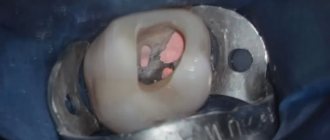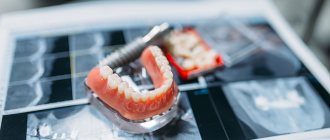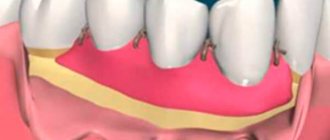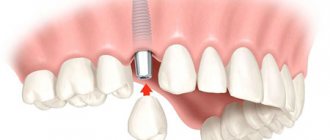What is a “dentist” like?
- good
- (more. )
Reference information on the declension of nouns and adjectives, verb conjugation, as well as the morphemic structure of words.
Who is a dentist?
Before dealing with narrow specializations, let’s consider who a dentist is in general. This is a doctor who has a higher education and has the right to carry out all types of dental treatment from therapeutic to prosthetics.
There are also dentists. Despite the fact that people call all dentists this way, in fact they are specialists with secondary specialized education. Their field of activity is dental treatment, but they do not have the right to undergo surgery.
In addition to dentists who work directly with patients, there is a dental technician. This specialist is engaged in the manufacture of prosthetics.
The second name of this specialist is odontologist. The main function of this doctor is to treat caries and its complications. The first thing you meet with a dental therapist is when you come to the dental clinic. He makes an initial examination and decides on treatment methods. His qualifications are sufficient to install fillings in carious cavities. During the filling process, the doctor examines each tooth individually in order not only to cure caries, but also to recognize other defects. He also treats gums and other inflammatory processes in the oral cavity. A dental therapist can diagnose the disease and select individual treatment or refer you to another specialist.
Dentist profession
A dentist has more authority regarding the conduct of medical procedures. Specialty training lasts 6 years, during which doctors master several important disciplines. Upon completion of training, the specialist is asked to choose one of the areas: therapist, surgeon, orthodontist, orthopedist or hygienist.
Comprehensive training is necessary in order to know the structure of the human body and be able to establish the relationship of one organ with another. The doctor also has to master the basics of psychology, since some patients come to the office in a depressed state, which aggravates the therapy.
Each category in dentistry should be considered in more detail.
In some cases, the dentist is unable to provide assistance to a small patient. This is due to several factors:
What is the difference between a dentist and a dentist: who is he and what does he do?
The word “dentist” is rarely used in our country; most often this is the name given to foreign specialists involved in the treatment of oral diseases. In the Russian-speaking environment, it is synonymous with the concept of “dentist”.
Orthopedic dentist - description of specialty
The name “orthopedic dentistry” was given to medical qualifications for the protection, restoration and prosthetics of the maxillofacial area. Sooner or later, every person needs to protect damaged tissue with a crown or prosthetics. The rating of dentists is opened by an orthopedist.
Situations in which the help of an orthopedist is needed:
- Tooth decay and loss. In this case, its function is restored by installing an artificial one.
- Protection from destruction. If only part of the bone tissue has been corroded, and the roots are intact and healthy, a crown is installed on such dental tissue, which stops further destructive process.
- The teeth are completely intact and healthy, but their appearance does not suit the owner. Installing ceramic plates will eliminate problems such as chips and scratches.
If the tooth tissue and root are healthy, then restoration is sufficient. Otherwise, prosthetics are performed. To determine what treatment plan is needed, the doctor conducts an examination, after which he makes a dental modeling in his laboratory. The orthopedist also deals with the correction of the appearance of the dental system, i.e. issues of aesthetic dentistry.
- Tooth decay and loss. In this case, its function is restored by installing an artificial one.
- Protection from destruction. If only part of the bone tissue has been corroded, and the roots are intact and healthy, a crown is installed on such dental tissue, which stops further destructive process.
- The teeth are completely intact and healthy, but their appearance does not suit the owner. Installing ceramic plates will eliminate problems such as chips and scratches.
conclusions
There are a lot of specialists in dentistry, and the activities of each of them are different. It is important to remember that you can avoid serious oral health problems and trips to dental clinics if you follow the basic rules:
- brush your teeth twice a day;
- visit the dentist once a year, even if there is no reason for this;
- Do not delay your visit if your gums become sensitive or inflamed.
By following these conditions, you will protect yourself from problems in the future. Do not be afraid of doctors; many diseases begin completely asymptomatically, and only a specialist will be able to identify the threat in time.
What types of dentists are there?
Prothodontists, orthodontists, or prosthetists work to create artificial teeth such as dentures, custom implants, and bridges. They can communicate with patients, participate in research and carry out orders related to the development of artificial teeth individually for each customer.
What are the responsibilities of such a specialist?
There are cases when teeth that normally perform chewing work look unattractive in appearance, causing awkwardness when communicating with others and emotional distress in a person. The problem can be solved with the help of veneers (overlay porcelain plates) that eliminate cosmetic defects (discoloration, shape) of the front teeth.
In one or two appointments, the orthopedist will use ceramic veneers to make your smile visually flawless and provide protection for the outer layer of the incisors. The service life of the linings is from 3 years, depending on the materials, installation method, and the skill of the doctor.
It is recommended to cover dental units that are weak in structure and susceptible to destruction with a crown to avoid the risk of their splitting and to prevent rapid deterioration. To prevent destruction and rapid loss of a damaged tooth, dentures are used to completely or partially restore it.
A high quality of life becomes impossible with excessively damaged, partially missing molars. Difficulty chewing food has a detrimental effect on the functioning of the gastrointestinal tract, causing diseases of the digestive system and other problems. In addition to the importance of the front incisors for aesthetic reasons, the role of other teeth is no less important: canines, premolars, molars. You should not consult a dentist if you have pain, the last stage of tooth decay, when the provision of orthopedic care becomes very difficult. If you lose any dental units (even distant ones), you need prosthetics to avoid stress on the teeth and their premature destruction.
The absence of molars as a result of periodontal damage, an accident, or in elderly people requires restoration of the dentition by an orthopedist using removable dentures. Such prosthetics were not an easy test for patients; the “false jaws” were bulky and uncomfortable. The materials for their manufacture (toxic and inelastic) did not fit well under the gums, often causing an allergic reaction, rubbing, and irritation of the soft tissues of the mouth.
Modern materials used for crowns and bridges do not wear out and last for many years (as a rule, they should be changed after 7 years), unless oral problems arise: weakening of the periodontium, exposure of the neck of the tooth, infection and inflammation of the root.
The durability and strength of crowns depends on the material:
- metal (steel, titanium, gold, platinum),
- metal ceramics (metal base with ceramic coating),
- ceramics with the addition of zirconium dioxide for strength,
- plastic can be used for temporary crowns.
When installing crowns, the root remains alive, the crown part of the tooth is corrected, the method is cheaper than implantation, which is the advantage of crowns. Disadvantages of restoring a tooth with a crown: the need to file the main and adjacent teeth, the risk of inflammation and tooth destruction in case of unsuccessful prosthetics.
If several dental units are lost in a row, a bridge (cast, metal-ceramic or ceramic) is made, which is placed on the supporting teeth. Bridges are durable and affordable, but, unfortunately, you have to file down the supporting teeth.
Fully or partially removable dentures are used to restore chewing function in the absence of a dental row.
Several dentists of different specializations are involved in the process of prosthetics.
According to the job description, the orthopedist is obliged to:
- prescribe an examination, select a treatment method,
- select a design and material for it (to be agreed with the patient),
- familiarize the patient with the treatment plan (indicating the dates of the visit, the production time of the product planned by the dental laboratory).
- try on, adjust and correct the finished product:
- install and fix a crown, bridge, prosthesis,
- remove the prosthesis if necessary, assess its condition,
- give recommendations to the patient on how to care for the structure.
In the manufacture of prosthetics, modern orthopedics uses special computer programs and the latest materials and innovative methodological developments.
Defects and anomalies of dental units that do not allow a person to chew fully, smile freely, or talk can seriously poison a person’s life: give rise to a lot of complexes and bring physical and moral suffering. Prosthetics is a dental service in any country in the world. The variety of dental services is complemented by the development of techniques and materials used.
Other dental specializations
Don’t think that if you walk into an office with a “dentist” sign, he will solve all your problems. The list of diseases is wide, so no one, even the smartest doctor, can treat everything.
Dentists are divided into the following specialists:
- Therapist. People come to him with general problems.
- An orthopedist who places dentures.
- Orthodontist – helps with malocclusion.
- Surgeon - performs surgical interventions.
- Periodontist – treats gum inflammation.
- Pediatric dentist – treats children under 17 years of age.
Pediatric dentist
As far as we know, children do not have as many teeth as adults. Yes, and people over 14 years old do not have primary incisors, canines and molars. Due to the significant differences between the temporary and permanent series, patients under 17 years of age are treated and examined by a pediatric dentist. This is one of the most difficult specialties in dentistry.
The doctor must not only perfectly know all the features of changes in the teeth of young patients, but also be a good psychologist, because it is not at all easy to work with children. You need to calm, cheer and encourage the baby and only then start working directly.
The dentist does not examine children, although it seems that there are many fewer orthodontic problems under 17 years of age, which means that it will be easier to treat them. A pediatric dentist differs from a dentist in that his specialization is more responsible. There is a huge difference in the structure of the teeth of children and adults, and only a certified doctor can correctly cope with the task assigned to him.
Dental surgeon: when radical measures are needed
As you know, surgery involves surgical interventions. This is what a surgeon does in a dental clinic. People come to him if other doctors can no longer help the patient.
The surgeon will once and for all relieve you of many problems that arise in the oral cavity. This complex specialty requires a lot of attention, a lot of practice and honed skills. A specialist is consulted for a number of problems:
trimming the frenulum of the tongue and upper lip;- tooth extraction - partial or complete;
- diagnosis of syphilis, tuberculosis in the oral cavity;
- treatment of tumors;
- treatment of trigeminal nerve diseases;
- plastic surgery of jaw deformities, restoration of proportions;
- gum surgery;
- treatment of periodontal disease;
- installation of special implants.
The patient rarely comes to the surgeon himself; more often he is referred by other dentists. Treatment is often carried out by several doctors at once , usually a periodontist and a therapist. After all, before and after surgery, you need to properly manage the patient.
Without a periodontist - nowhere
To understand what this specialist does, you need to understand what periodontitis is. Periodontium is the soft tissue around the teeth, or, more simply, the gums. Teeth and gums are one system. There cannot be healthy incisors, canines, molars and diseased gums, or vice versa.
The periodontist treats:
- gingivitis;
- stomatitis;
- periodontitis;
- periodontal disease.
Most often, periodontal diseases occur due to infection between hard tissues (teeth) and soft tissues (gums).
How gum and dental diseases develop
The importance of a prosthodontist
This doctor is also called a prosthetist, because the essence of his specialty is prosthetics for the patient’s teeth. People go to him only after a full examination by a dentist-therapist, since he will be able to work with dentures and do his job only when sanitation has already been carried out - otherwise the risk of inflammation is too high.
Today, orthopedists are the most sought-after specialists. They install crowns, pins, bridges, and all kinds of implants. It is rare to find a person over thirty years of age who has never consulted this doctor.
Dentist-therapist – the broadest specialty
The therapist deals with general problems:
- treatment of caries, periodontitis, pulpitis;
- patient consultations;
- disease prevention;
- preparing the mouth before prosthetics.
It is this specialist who is always in line to get checked out. An appointment with a dentist is somewhat similar to an appointment with a dentist, but there is a difference: the second doctor does not treat or examine pulpitis, periodontitis and other infectious and inflammatory diseases.
The therapist has the right not only to the initial consultation, but also to the treatment of patients. A dentist also differs from a dental therapist in that he cannot advise patients according to their disease; his duty is to refer them to other specialists.
The orthodontist will correct nature
This doctor specializes in correcting malocclusion using braces, plates, or mouth guards. Due to improper placement, teeth can wear out, crumble, making it much more difficult for a person to carry out hygiene measures and chew food.
With the help of an orthodontist, congenital or hereditary anomalies are corrected that interfere with a full life, for example, a gap between the front incisors, irregular shape, location and many others. In the modern world, the aesthetic side is not the least important - we can say that the orthodontist makes a “beautiful smile.” It is worth remembering that treatment with this doctor may take more than one year.
What is the name of a dentist?
Modern dentistry provides a range of services, so today there are more and more different specializations in this field.
Dental professions:
- Dentist;
- dentist;
- orthopedist;
- orthodontist.
In this article we will discuss each specialization separately. You will learn: what is the name of the doctor who inserts teeth, and also whether a dentist has the right to remove teeth, which doctor treats stomatitis, and much more.
Dental professions:











